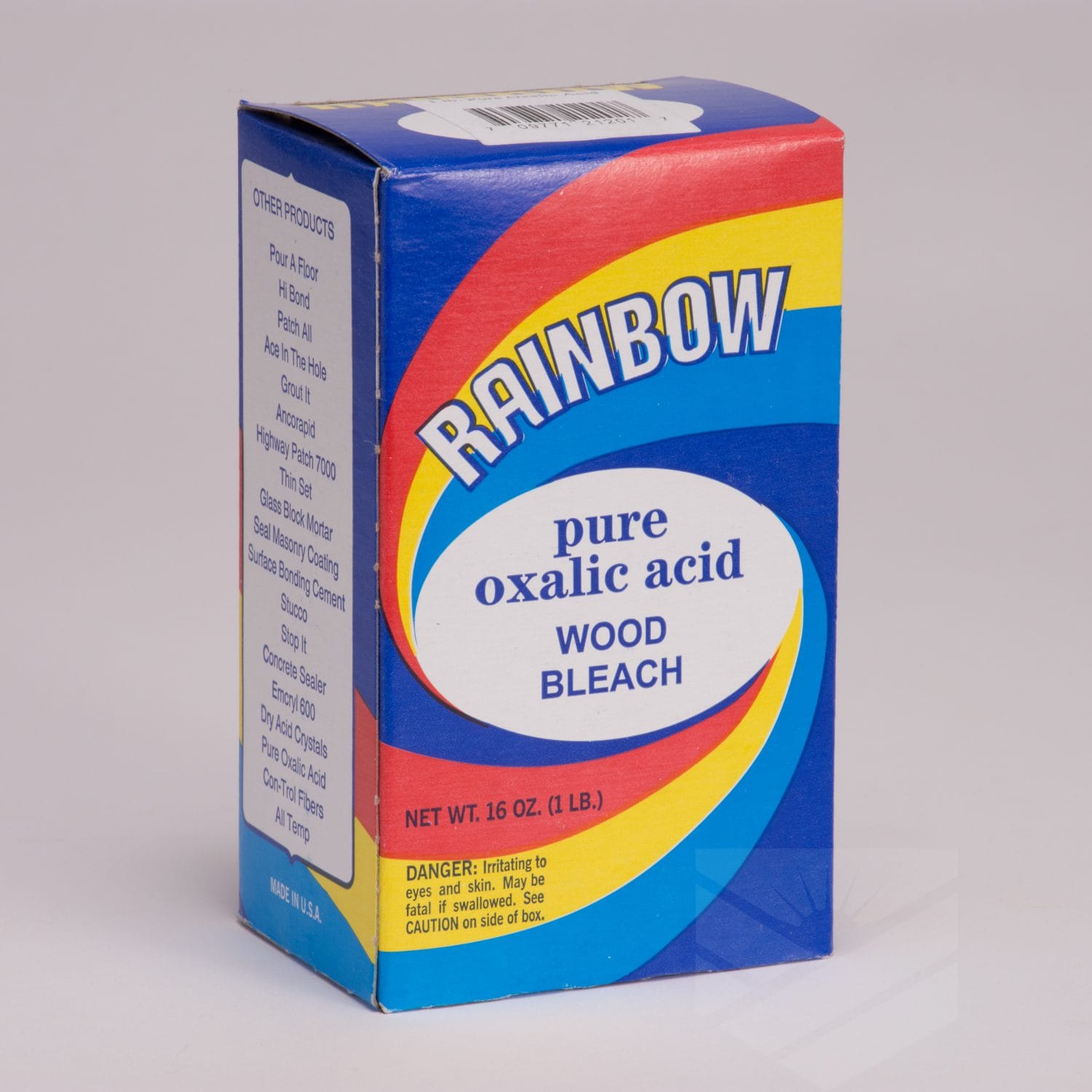This comprehensive guide provides step-by-step instructions on how to use oxalic acid to safely and effectively brighten and restore the natural beauty of your wood projects. Whether you’re dealing with stubborn water stains, rust marks, or the graying effects of weathering, oxalic acid can be a powerful tool in your woodworking arsenal.
Understanding the Power of Oxalic Acid
Oxalic acid, a naturally occurring compound found in many plants, acts as a gentle yet effective wood bleach. Unlike harsher chemicals like chlorine bleach, oxalic acid brightens wood by removing discoloration and grime without damaging the wood grain. It achieves this by chemically breaking down iron stains, much like rust removal, and neutralizing alkaline substances that contribute to discoloration.
This makes oxalic acid ideal for a variety of wood surfaces, from furniture and decks to fences and siding. It can tackle water stains on antique tables, iron marks on outdoor furniture, and even refresh the weathered gray look of a fence. But remember, different wood species may react differently to oxalic acid, so testing the solution on an inconspicuous area is always recommended. Oak and mahogany are known to respond particularly well, but results can vary even within species due to individual wood characteristics.
A Step-by-Step Guide to Oxalic Acid Wood Bleaching
Before you begin, prioritize safety. Protective gear, including goggles, gloves, and ideally a respirator, is essential, as is working in a well-ventilated area. Think of it like prepping for a small science experiment – safety first!
Preparing Your Wood and Workspace
- Clean the Wood: Thoroughly clean the wood surface using a suitable cleaner to remove dirt, dust, grime, and loose debris. This ensures that the oxalic acid can penetrate the wood evenly and effectively.
- Safety First: Put on your gloves, goggles, and respirator. Ensure adequate ventilation by opening windows and doors or working outdoors.
Mixing and Applying the Oxalic Acid Solution
- Mix the Solution: Dissolve 28-30 grams of oxalic acid crystals in 1 cup of hot water. The heat helps the crystals dissolve more readily. Stir until the crystals are completely dissolved, ensuring a clear solution with no remaining granules. It’s like making a strong cup of tea – you want all the “tea leaves” to disappear.
- Apply the Solution: Using a synthetic bristle brush, apply the oxalic acid solution evenly to the wood surface, working with the grain. For intricate details or tight corners, a smaller brush can be helpful. Ensure complete and even coverage for consistent results.
Drying, Neutralizing, and Rinsing
- Drying Time: Allow the treated wood to dry completely. The drying time can vary depending on humidity, temperature, and the type of wood. This is the waiting game, but patience is key for optimal results.
- Neutralization: Mix a solution of baking soda and water (approximately 1 tablespoon of baking soda per cup of water) and apply it to the dried, bleached wood. This crucial step neutralizes any remaining oxalic acid, preventing potential long-term damage to the wood. Think of it like balancing the pH of your wood back to a safe level.
- Rinse and Dry: Rinse the wood thoroughly with clean water to remove the neutralized solution and any remaining residue. Allow the wood to dry completely again.
Optional Finishing Touches
- Sanding (Optional): Lightly sand the surface after bleaching and drying to smooth the wood and prepare it for any finishing treatments, such as staining or painting.
- Sealing (Recommended): Applying a sealant after the wood is completely dry can help protect it from future discoloration and maintain the brightened appearance.
Oxalic Acid vs. Other Wood Bleaching Options
Choosing the right bleaching agent depends on the project and desired outcome. While oxalic acid is effective for restoring weathered wood and removing specific stains, other options exist:
- Chlorine Bleach: While effective for removing mildew and tough stains, chlorine bleach can damage wood fibers and is generally not recommended for brightening wood, as it tends to strip away the natural color, leaving it pale and lifeless.
- Two-Part A/B Bleach: This potent mix of sodium hydroxide and hydrogen peroxide offers a stronger lightening effect but requires careful handling due to its aggressive nature. It can be an alternative to oxalic acid for significant lightening but carries a higher risk of damaging the wood.
- Oxygen Bleach: A gentler option suitable for laundry and surface stains, oxygen bleach is generally not strong enough for brightening wood. It’s more like a light dusting than a deep clean.
- Hydrogen Peroxide: A milder alternative to some bleaches that offers gentle lifting capabilities without the harsh side effects. It is suitable for certain woods and stain types but might need longer processing time and multiple applications.
Troubleshooting and Tips
- Uneven Bleaching: A second application of oxalic acid can often resolve uneven bleaching.
- Stubborn Stains: For persistent stains, consider a slightly stronger oxalic acid solution (always test in an inconspicuous area first) or light sanding before bleaching.
- Sun Bleaching: Combining oxalic acid bleaching with sun bleaching can amplify the lightening effect, but monitor the process carefully to avoid excessive drying or discoloration.
Unravel the mysteries of your HVAC system with this comprehensive nest learning thermostat wiring diagram. Perfectly spaced screws are key to a flawless finish, so dive into the specifics of screw spacing drywall and achieve professional-level results.
By following this guide and taking necessary precautions, you can effectively use oxalic acid to revitalize your wood projects and restore their natural beauty. Remember, wood is a natural material, and individual pieces can react differently. Always test in an inconspicuous area first and adjust your approach as needed. Ongoing research continually expands our understanding of wood treatments, so keep exploring and experimenting!
- Unlocking 2-Letter Words with U: The Definitive Guide - April 4, 2025
- Unlock Words with the Letters THREE: Top Unscramble Tools 2025 - April 4, 2025
- Master Scrabble: X & Z Words for High Scores - April 4, 2025

















1 thought on “Oxalic Acid Wood Bleach: Revive and Brighten Your Wood Beautifully”
Comments are closed.